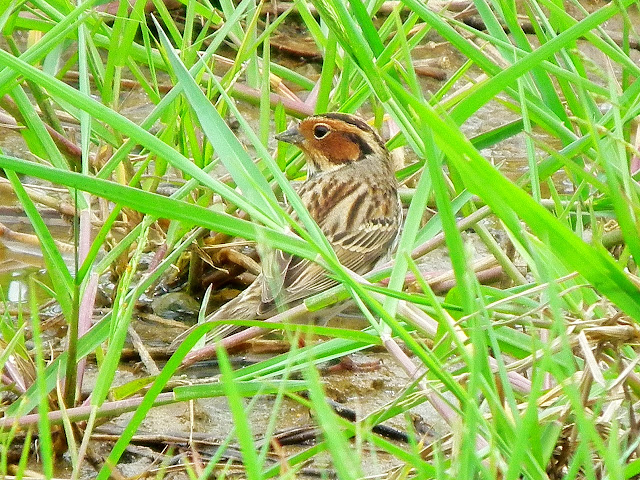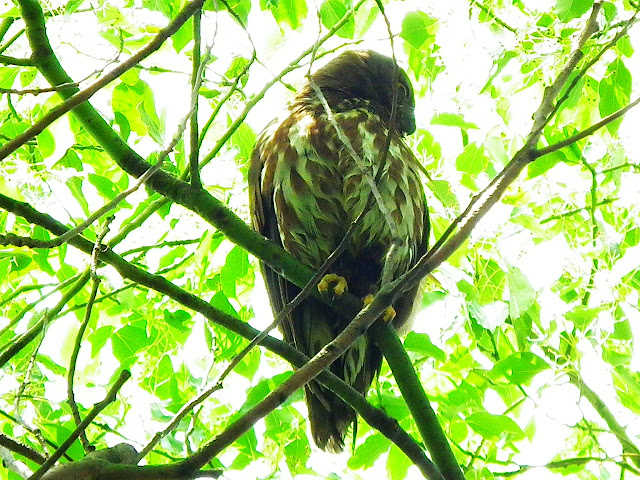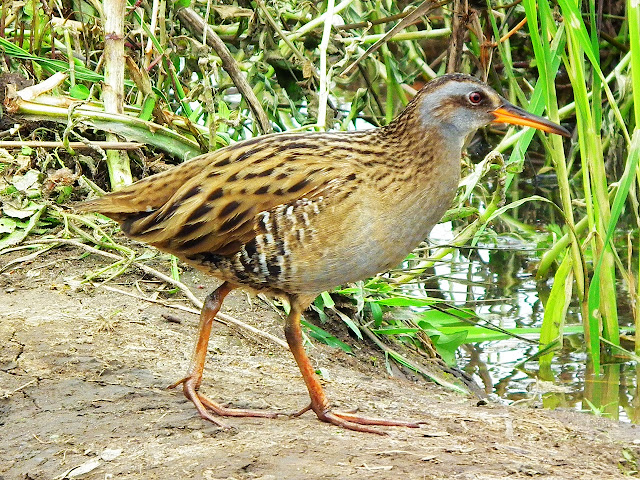Oddly enough, this Red Knot always hung around with two Great Knots. Why? Too lonely? For the entire day, I saw only one Red Knot in Watzuwei Nature Reserve area, Bali District, New Taipei City. After I went home and searched the web, I found that Red Knots are uncommon passage migrants here in Taiwan. No wonder they are lonely and like to hang around with other waterfowls.
Red Knot, photographed on 5/15/2012, at Watzuwei Nature Reserve area, Bali District, New Taipei City

Great Knots and Red Knot, photographed on 5/15/2012, at Watzuwei Nature Reserve area, Bali District, New Taipei City

Great Knots and Red Knot, photographed on 5/15/2012, at Watzuwei Nature Reserve area, Bali District, New Taipei City

Red Knot and Sharp-tailed Sandpiper, photographed on 5/15/2012, at Watzuwei Nature Reserve area, Bali District, New Taipei City

Great Knots and Red Knot video recorded on 5/15/2012, at Watzuwei Nature Reserve area, Bali District, New Taipei City
| Chinese name: | 紅腹濱鷸 |
| English name: | Red Knot |
| Nickname: | |
| Scientific name: | Calidris canutus |
| Order: | Charadriiformes |
| Family: | Scolopacidae |
| Species status: | Species |
| Conservation status: | Least Concern. |
| Migration status: | Passage migrant in Taiwan |
| Frequency of appearance: | Uncommon in Taiwan |
| Foods: | Insects, mollusks |
| Habitat: | Wetlands, outlets of rivers, mudflats of sea shores |
| Altitude: | Low altitude |
| Behavior: | Often appear in flocks in mudflats of sea shores, wetlands, swamps and outlets of rivers, and mixed with other Scolopacidae and Charadriidae birds. |
| Characteristics: | General Characteristics: About 25 cm long. Bill is black. Feet are dark green. There are vertical black stripes from head top to rear neck. Back, wing and tail are mainly gray. The breeding plumage is light reddish brown on face, neck and belly, with some maroon and black spots on wings. |
| Breeding places: | Far north of Europe, Asia and America. |
| Migration destinations: | Wintering in southern Europe, Africa, southern Asia, Oceania, Australia, New Zealand, southern America. |
| Time photographed: | 5/15/2012 |
| Location found: | Bali District, New Taipei City |
| Sources: | Internet |
| Notes: |













































